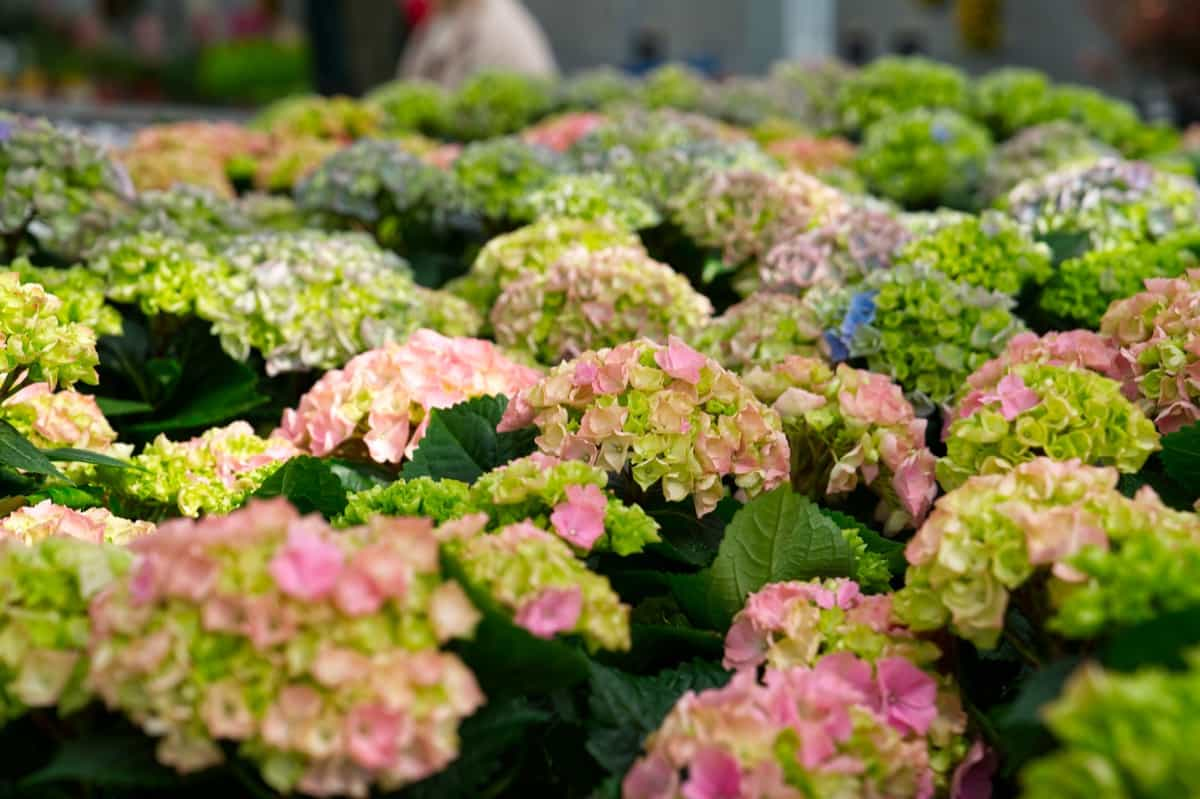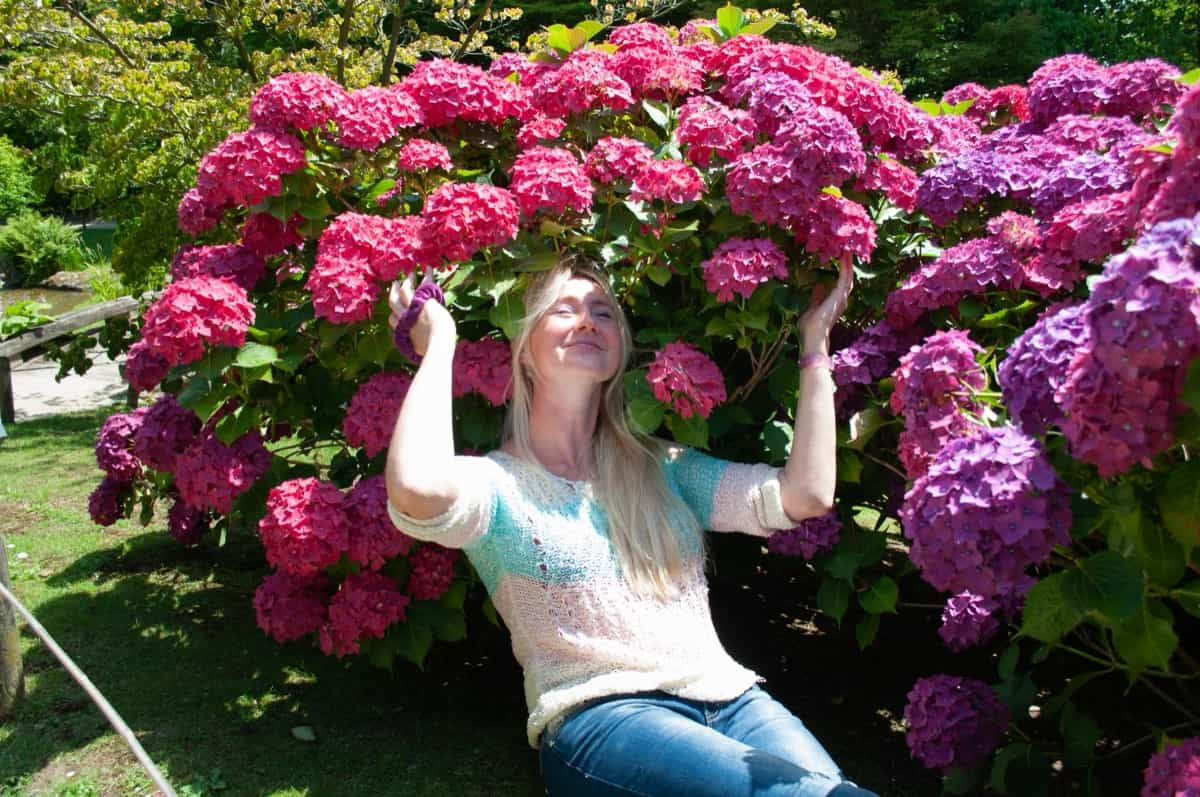Mophead Hydrangeas, scientifically known as Hydrangea macrophylla, are renowned for their captivating, globe-like flower clusters resembling pom-poms. These deciduous shrubs boast large, lush blooms in various hues, including blue, pink, and purple, creating a stunning visual display in gardens. Known for their versatility, Mophead Hydrangeas thrive in different climates, making them a popular choice among garden enthusiasts. Understanding their care, from propagation to full growth, ensures a flourishing and vibrant garden addition.

How to Care for Mophead Hydrangeas
Understanding Mophead Hydrangea Care
Mophead Hydrangeas demand thoughtful care to achieve their full potential. These hydrangeas flourish in well-draining soil with a slightly acidic to neutral pH. Adequate watering is crucial, with consistent moisture levels to support their shallow root systems. Pruning, primarily performed in late winter or early spring, encourages robust growth and optimal flower production.
Additionally, understanding the soil’s aluminum content influences flower color, with acidic soils producing blue blooms and alkaline soils yielding pink. Implementing these care practices ensures the health and longevity of Mophead Hydrangeas, allowing them to thrive and enchant with their captivating blossoms.
Choosing the Right Location for Mophead Hydrangeas
Selecting an ideal location is pivotal for Mophead Hydrangeas to thrive. Opt for a spot with dappled sunlight or partial shade, shielding the plants from intense afternoon sun. Well-drained soil rich in organic matter promotes healthy root development. Consider the mature size of the hydrangeas when spacing, providing ample room for their expansive growth.
Sheltering them from harsh winds prevents damage to the large, delicate blooms. Understanding the climate in your region ensures suitability for these versatile shrubs. With thoughtful consideration of these factors, Mophead Hydrangeas can adorn your garden with their picturesque blossoms, enhancing the overall beauty of outdoor space.
Soil Requirements for Mophead Hydrangeas
Mophead Hydrangeas thrive in well-draining soil with a pH ranging from slightly acidic to neutral (6.3 to 6.7). A loamy soil composition enriched with organic matter provides the ideal foundation for their growth. Organic matter enhances water retention capacity and nutrient availability, fostering a conducive environment for robust root development. Amending the soil with well-rotted compost during planting aids in moisture retention and promotes aeration.
In case you missed it: Are Hydrangeas Annuals or Perennials: Discover the Lifespan of Hydrangea Plants

In terms of pH, an interesting aspect of Mophead Hydrangeas is their ability to change flower color based on soil acidity. In acidic soils with a lower pH, the flowers tend to exhibit blue hues, while in more alkaline soils, a shift towards pink or purple tones occurs. Monitoring and adjusting soil pH accordingly allows gardeners to influence the captivating color palette of these hydrangeas, adding an artistic dimension to their cultivation.
Watering and Feeding Mophead Hydrangeas
Mophead Hydrangeas have specific watering needs that are crucial for their well-being. These hydrangeas prefer consistent moisture, with the soil being kept evenly moist but not waterlogged. Deep, thorough watering is advisable, especially during dry spells, to ensure hydration reaches the shallow root system. Mulching around the base aids in moisture retention and temperature regulation.
Feeding Mophead Hydrangeas requires a balanced, slow-release fertilizer applied in early spring. A formulation with balanced ratios of nitrogen, phosphorus, and potassium supports overall plant health and encourages prolific flowering. Regular fertilization during the growing season promotes strong, healthy stems and vibrant blooms. Care should be taken not to over-fertilize, as excessive nitrogen can cause lush foliage instead of flower production.
Pruning and Maintenance of Mophead Hydrangeas
Pruning plays a vital role in shaping Mophead Hydrangeas and maximizing their blooming potential. The best time for pruning is late winter or early spring before new growth emerges. Remove dead or weak wood to encourage airflow and prevent disease. For established plants, selectively prune older stems to rejuvenate the plant and stimulate new growth.
Deadheading spent flowers is beneficial for continuous blooming and maintaining a tidy appearance. However, be cautious with pruning, as Mophead Hydrangeas set their buds in late summer or early Fall for the following year. Pruning too late can result in the removal of potential blossoms.
Regular maintenance involves monitoring for pests and diseases addressing issues promptly. Mulching around the base helps control weeds, retains moisture, and insulates roots from temperature extremes. By incorporating these practices, gardeners can ensure the longevity, health, and aesthetic appeal of their Mophead Hydrangeas.
Dealing with Pests and Diseases in Mophead Hydrangeas
Mophead Hydrangeas are generally hardy, but like any plant, they can face challenges from pests and diseases. Common pests include aphids, spider mites, and scale insects. Regularly inspecting the undersides of leaves for pests and using neem oil or insecticidal soap can control infestations. Additionally, promoting a healthy garden ecosystem with beneficial insects can aid in pest management.
In case you missed it: Bone Meal for Hydrangeas: Benefits, When and How to Apply?

Hydrangeas may be susceptible to diseases such as powdery mildew, leaf spot, and root rot. Provide adequate spacing between plants for better air circulation, avoid overhead watering, and apply fungicides when necessary to mitigate disease issues. Well-draining soil and proper watering practices also contribute to disease prevention.
Propagation of Mophead Hydrangeas
Mophead Hydrangeas can be propagated through various methods, including softwood cuttings, layering, and division. Softwood stem cuttings should be taken in late spring or early summer, and later, they should be treated with rooting hormone before planting in a well-draining mix. By layering, a low-hanging branch is bent to the ground, covered with soil, and allowed to root before being severed.
The division is typically performed in early spring or fall by separating the plant into sections, each with its own root system. Make sure that each division has healthy roots and shoots before replanting. Propagation offers an economical way to expand your hydrangea collection or share these beautiful plants with fellow gardeners.
Using Mophead Hydrangeas in Landscaping
Mophead Hydrangeas are versatile and can be a focal point or complement other plants in landscaping. Their large, showy blooms will add a touch of beauty to gardens, and their ability to change color based on soil pH makes them a dynamic choice. Planting them in groups or as borders provides a striking visual impact. These hydrangeas excel in mixed shrub borders or as standalone specimens, creating a captivating display throughout the growing season.
Consider their size and shape when planning, allowing enough space for their mature growth. Mophead Hydrangeas also work well in containers, offering flexibility for those with limited garden space or those looking to create movable floral displays. Whether adorning a cottage garden, lining a pathway, or enhancing a formal landscape, Mophead Hydrangeas contribute beauty and charm, making them a valuable addition to diverse landscaping schemes.
Seasonal Care Tips for Mophead Hydrangeas
- In early spring, prune dead or weak stems and apply a balanced, slow-release fertilizer to encourage robust growth. Keep an eye out for emerging buds.
- During Summer, ensure consistent moisture, especially during dry spells, and deep-water to support the shallow root system. Mulch around the plant’s base to retain moisture and control weeds. Deadhead spent flowers for continuous blooming.
- In the Fall, monitor for pests and diseases; treat as needed. Avoid late-season pruning to preserve next year’s flower buds. Consider amending soil pH for desired flower color.
- During winter, protect plants from harsh winds by situating them in a sheltered location. Consider covering with burlap in colder climates for added insulation. Limit disturbances to the plant, as Mophead Hydrangeas benefit from a dormant period during winter.
In case you missed it: How to Grow Hydrangeas from Stem Cuttings

Conclusion
In conclusion, nurturing Mophead Hydrangeas from propagation to full growth involves a thoughtful blend of soil care, watering precision, and pruning finesse. By understanding their unique needs and incorporating seasonal considerations, these versatile shrubs reward garden enthusiasts with vibrant, pom-pom-like blooms. Whether transforming landscapes or gracing containers, the journey of caring for Mophead Hydrangeas unfolds as an artful exploration, yielding a garden adorned with timeless beauty.
- Feed Your Flock for Less: Top 10 Tips to Save on Chicken Feed
- Ultimate Guide to Ossabaw Island Hog: Breeding, Raising, Diet, and Care
- Hatching Answers: The Top 10 Reasons Your Chickens Aren’t Laying Eggs
- Eggs and Economics: Breaking Down the Cost of Raising Backyard Chickens
- Defend Your Greens: Proven Methods to Keep Iguanas Out of Your Garden
- Ultimate Guide to Cinnamon Queen Chicken: A Comprehensive Guide for Beginners
- Ultimate Guide to California Tan Chicken: Breeding, Raising, Diet, Egg-Production and Care
- Ultimate Guide to Marsh Daisy Chicken: Breeding, Raising, Diet, and Care
- 10 Types of Chicken Farming Businesses You Can Start for Profits